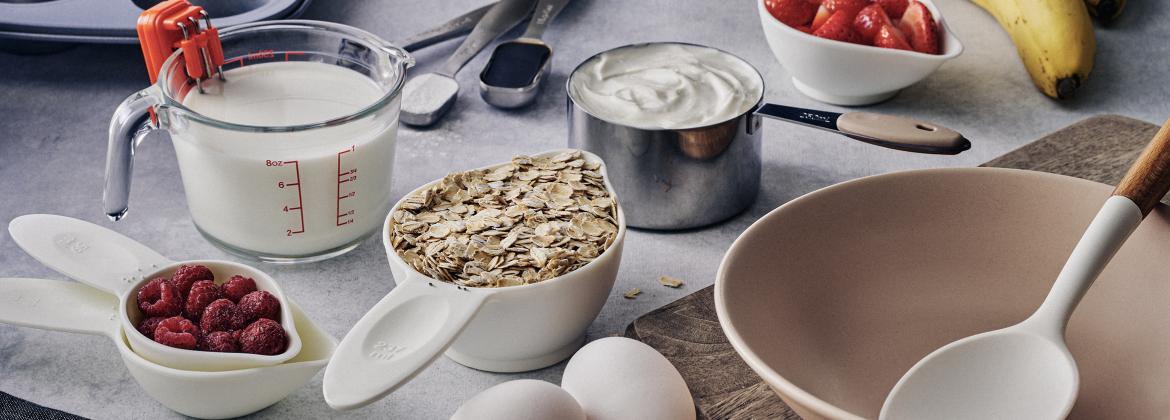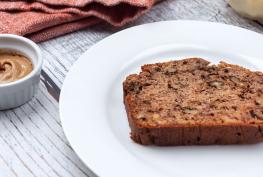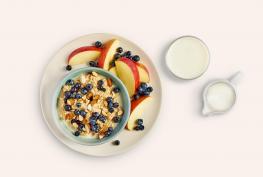Print or share this article
For salads and some simple recipes, the amount of ingredients doesn't need to be exact to turn out well. For other recipes such as sauces and baked goods, it’s best to measure ingredients accurately to ensure that the recipe is successful.
Choose the right tool to get the exact measurement of an ingredient. Be sure to follow any measuring tips provided by the specific recipe.
Measuring liquids
Liquid measuring cups have a spout and graduated markings. Use them to measure ingredients such as water, milk, and broth. Choose a transparent glass cup be able to see the contents.
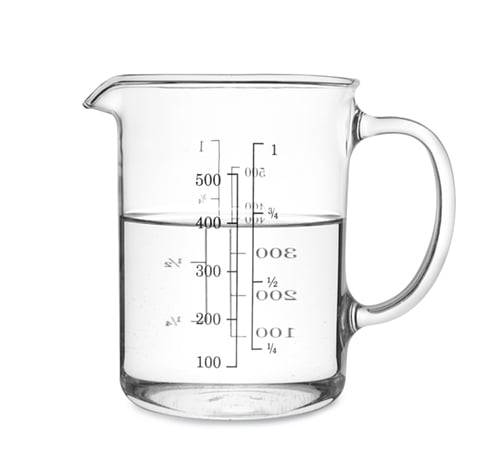
Use the smallest cup possible. For example, to measure 60 mL of water, use the 250 mL measuring cup instead of the 1 L cup.
To measure liquids accurately:
- Place the measuring cup on the counter.
- Bend down so that your eyes are at the same level as the cup.
- Add the liquid until it reaches the desired scale line measurement.
Measuring dry ingredients
Use dry measuring spoons and cups to measure dry ingredients such as flour, dried lentils, and quinoa.
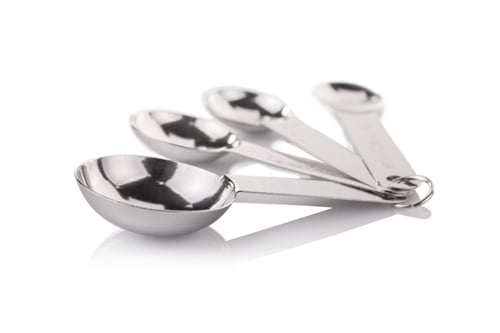
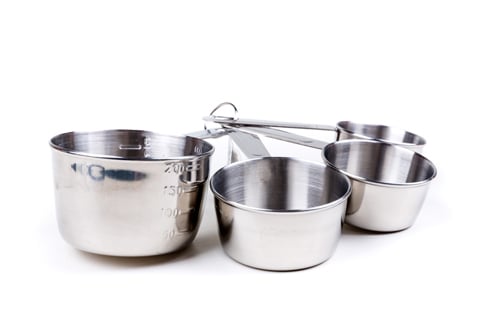
To measure accurately:
- Use a spoon to scoop out the ingredients and fill the measuring cup. If you scoop the cup into the bag of flour, the flour will be packed and there will be more than the volume needed for the recipe.
- Smooth out the top of contents with a spatula or knife.
- Fill the cup to the brim, ensuring that there isn't a small mound on top.
Measuring thick ingredients
Use measuring spoons and dry measuring cups to measure thicker ingredients such as yogurt, cottage cheese, and nut butter.
If you use a liquid measuring cup:
- Thick liquids will stick to the sides of the measuring cup.
- It will be difficult to read the measurement if you put too much in and want to take some out.
Measure thick ingredients like you would measure dry ingredients.
Measuring ingredients in small amounts
Use measuring spoons to measure ingredients in small amounts. You can scoop the spoon into the bag such as the bag of spices, herbs, baking powder or baking soda. Smooth out the top of the contents with a spatula or knife.
Putting into practice
Try using the right measuring tools for this broccoli and cheese muffin:
- A liquid measuring cup with a spout for milk.
- Measuring spoons for baking powder, garlic powder, paprika, cayenne pepper and oil.
- Dry measuring cups for flour, corn meal, flax seed, yogurt, broccoli and cheese.
Conversions
You don't have to be a math pro! Use this list to convert between metric and imperial measurements.
| Metric | Imperial |
|---|---|
| 750 mL | 3 cups |
| 500 mL | 2 cups |
| 375 mL | 1½ cups |
| 310 mL | 1¼ cups |
| 250 mL | 1 cup |
| 180 mL | ¾ cup |
| 150 mL | ⅔ cup |
| 125 mL | ½ cup |
| 80 mL | ⅓ cup |
| 60 mL | ¼ cup |
| 45 mL | 3 Tbsp |
| 30 mL | 2 Tbsp |
| 15 mL | 1 Tbsp |
| 10 mL | 2 tsp |
| 7.5 mL | ½ Tbsp |
| 5 mL | 1 tsp |
| 2 mL | ½ tsp |
| 1 mL | ¼ tsp |

